Pest control in cotton plays a crucial role as it directly influences the quality of cotton fibres. Keeping a close watch on your cotton plants from the early stages becomes essential, as pest infestation can begin as soon as the crop starts growing, particularly with pests like the cotton bollworm, which feed on bolls. Following different methods and practices to control the Incidence of Bollworm in Cotton becomes important since the presence of cotton bollworms can lead to the rotting of bolls, resulting in loss of quality and grade as they feed on seeds and fibers.
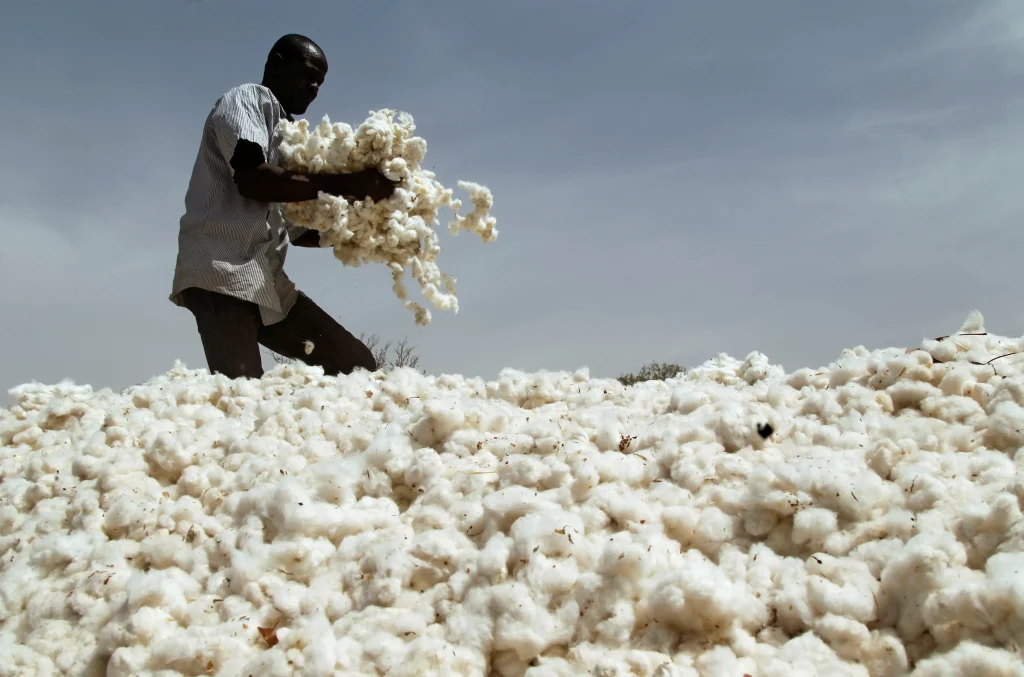
How can we identify a bollworm infestation in cotton? What are the symptoms of bollworm in cotton? What methods and practices can we adopt to prevent and control cotton bollworms?
Symptoms of Bollworm Infestation in Cotton

Cotton crops are usually infested by 3 types of bollworms:
- Cotton Pink Bollworm: Pectinophora gossypiella
- Spotted bollworms: Earias vitella & E. insulana
- American Bollworm: Helicoverpa armigera
Cotton Pink Bollworm Symptoms

Cotton Pink Bollworm attack is difficult to identify as the aperture through which the bollworm enters will be closed. These bollworms feed on buds, flowers and bore into bolls.
When bollworms attack flowers, they do not open and give a rosette appearance. Young bolls shed off whereas larger bolls remain on the plant. In the bolls you can observe, locules will be damaged and interlocular burrowing will be visible. These pink bollworms attack the seeds as well and the lint gets stained.
Spotted Bollworm Symptoms
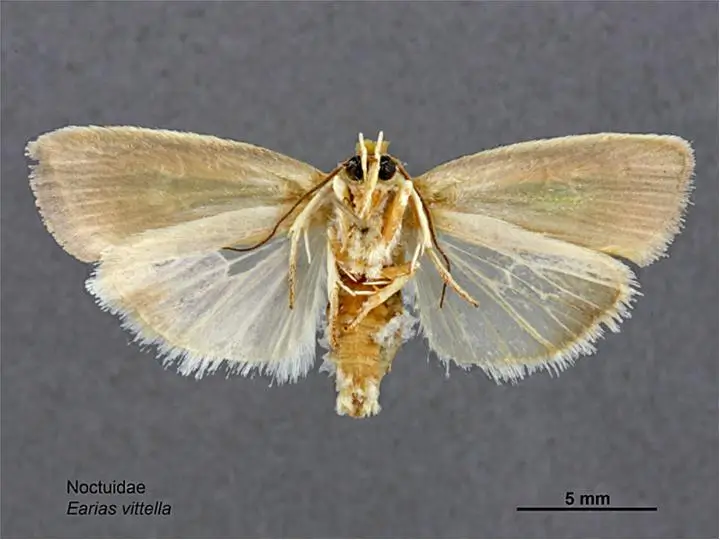
Symptoms caused by the spotted bollworm are slightly different from those caused by the pink bollworm.
Firstly, the caterpillar bores into the tender shoot, leading to withering of the affected plant part around the puncture site, resulting in drooping and drying up. Later, as the bolls and squares begin to develop, these caterpillars move from the shoots to the bolls and damage them by creating holes. Since they attack both developing and young bolls, the damaged ones often fall off the plant. Infested bolls that remain on the plants are further damaged by the larvae, which consume the seeds inside and fill them with excreta, leading to premature opening of these bolls.
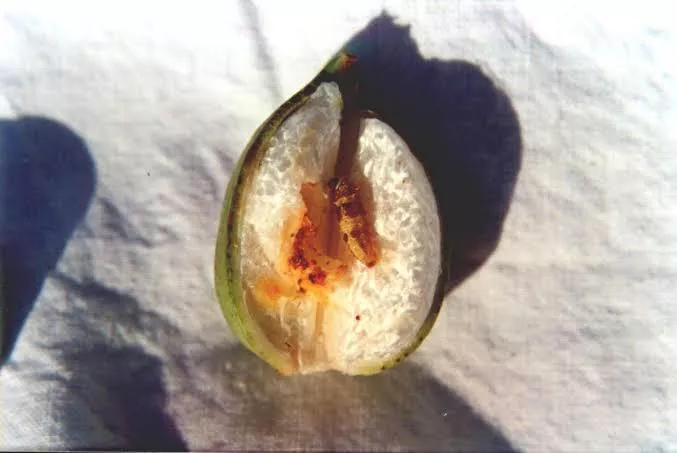

American Bollworm Symptoms
If you are seeing the caterpillar’s head thrust inside the bolls, leaving the rest of the body outside, it is likely an American Bollworm.
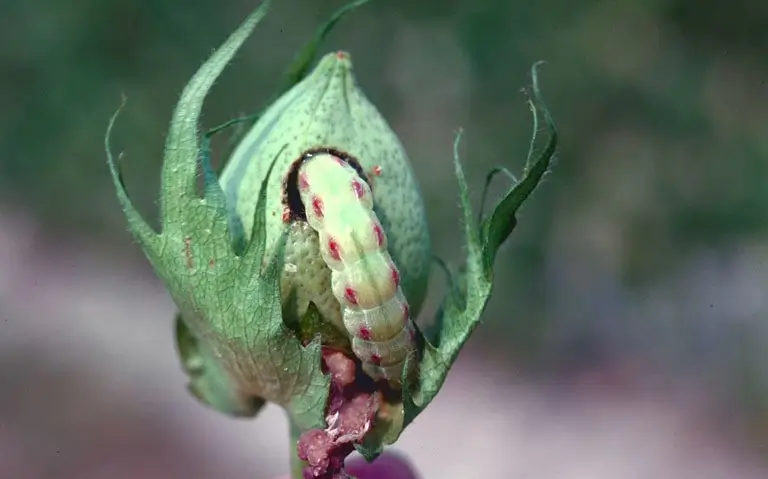
They cause damage to leaves, squares, bolls, and small bolls. They are particularly partial towards developed and open bolls, as they primarily attack young bolls. These damaged squares and young bolls fall off the plant.
4 Ways to Control Bollworms in Cotton
Growing Bollworm resistant varieties
- Grow Bt cotton variety like Bollgard I as it offers protection against American Bollworm and Bollgard II protects the plant from Spodoptera and Helicoverpa.
- Resistance against Helicoverpa can be achieved by growing varieties like L 1245, L D 135, Sujata, L K 861 and Abadhita
- Spotted bollworm can be kept away by growing varieties like L 1245, JK 119-25-54, BCS 10, BCS 10-75, FBRN 2-6, HAO 66-107-1/1, Hopi, Deltapine, LH 95, UK 48G 27 and Sanguineum
Practices to follow in field
- Premonsoon sowing directly influences bollworm incidence in the field. Sowing during the 4th week of September lowers the bollworm damage in rainfed areas.
- Crop rotation is a must! Don’t go for the same crop during winter and summer season
- Say no to monocropping! Growing of crops like greengram, soyabean, blackgram, castor, sorghum etc. as intercrop, border crop or alternate crop reduces the pest infestation.


Organic Ways to Control Cotton Bollworms
Monitor adult moth activity by placing pheromone traps at 12 per hectare
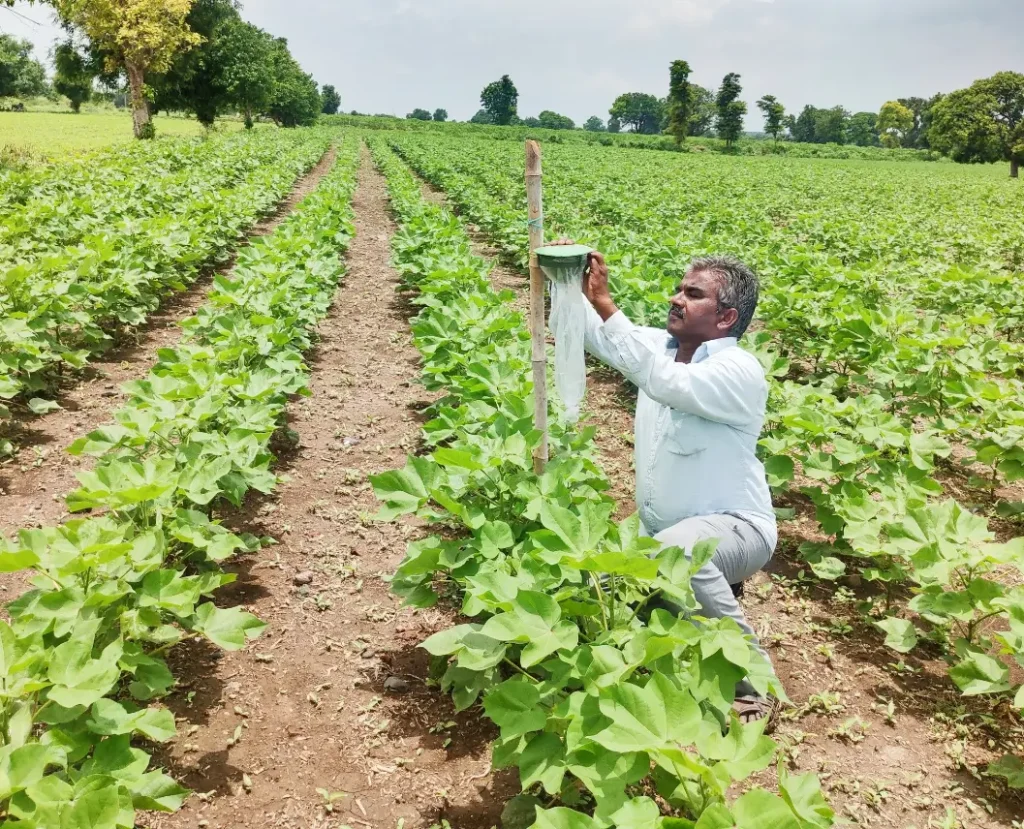
Applying Neem Based Insecticides to Control Bollworms in Cotton
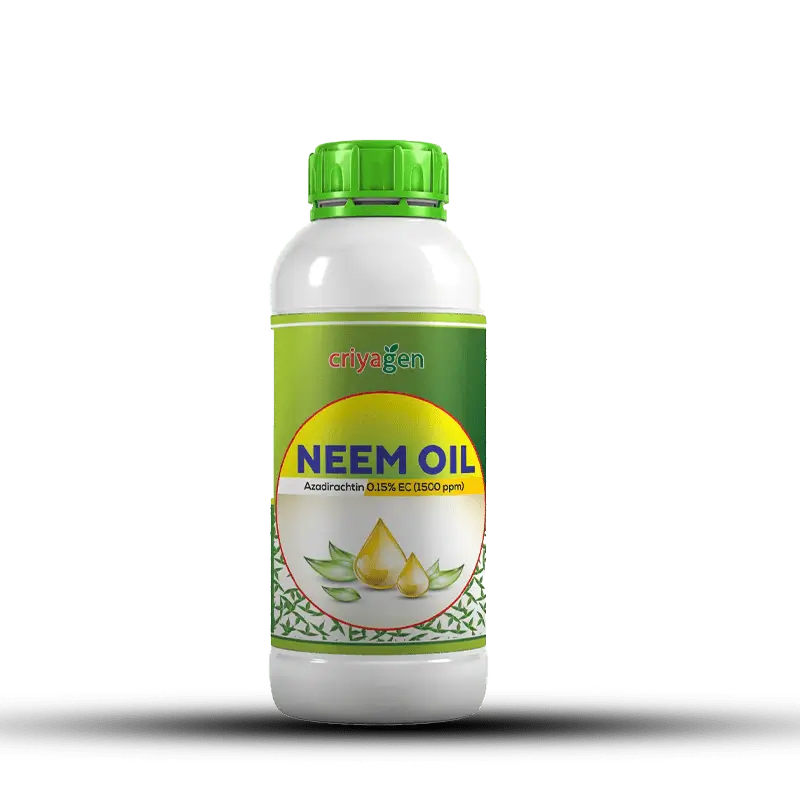
Spraying Criyagen Neem Oil in the field kills the freshly laid eggs due to the azadirachtin content, which exhibits ovicidal properties. Applying neem oil in the field retards the growth and inhibits the feeding of bollworms.
Chemical Methods to Control Bollworms in Cotton
During bolling and maturation stage applying any of these insecticides such as Quinalphos 25 EC (2 L/ha), Chlorantraniliprole 18.5 SC (150 ml/ha), Emamectin benzoate 5 SG (220 g), Flubendiamide 39.35 SC (100-125 ml), Profenofos 50 EC (1.5-2.0 L) effectively controls bollworms in the field.
Get your insecticides delivered straight to your doorstep! Download AgriApp today and add these insecticides to your cart.
Don’t forget to apply our special coupon code RR150 for added savings. Happy shopping!
Cotton fibre quality is influenced not only by harvesting and processing methods but also by management from the initial stage of crop growth. Controlling bollworms is crucial as they feed on developing seeds and fibers, leading to potential losses in quality and grade. Follow the methods mentioned to grow bollworm-free cotton crops.
Learn more about how to improve the efficiency of pesticides sprayed using Super Spreader